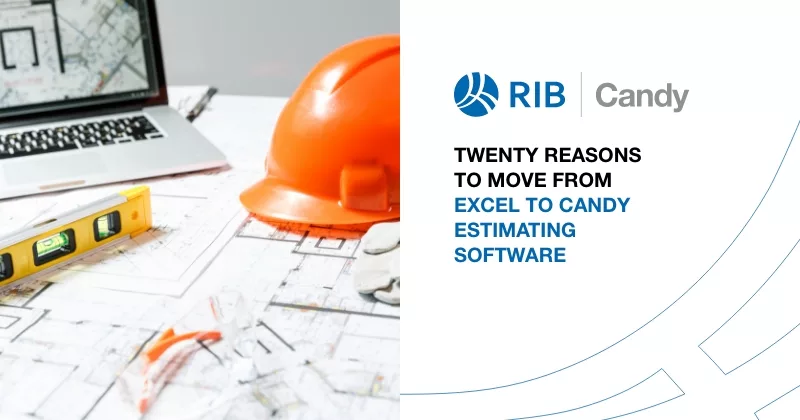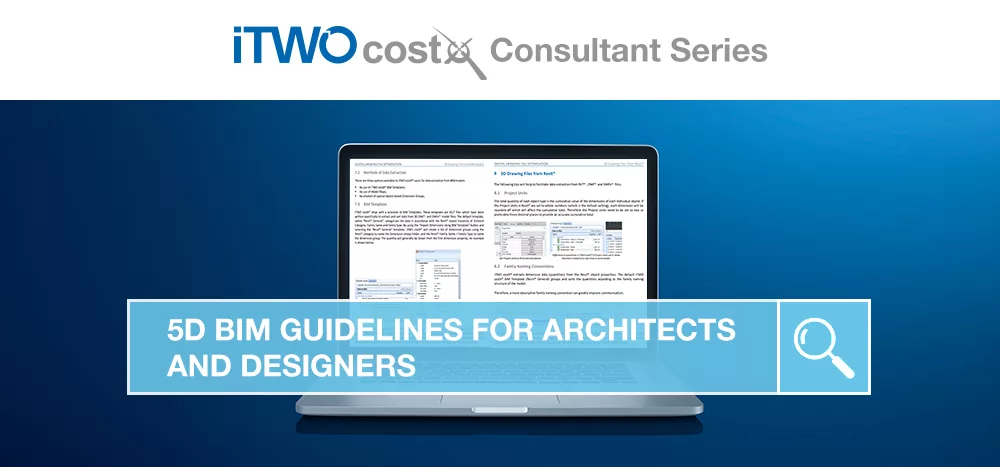24 mins read
Bill Of Quantities – Everything You Need To Know

What separates a successful construction project from a failed build … or even a breakeven build? It’s almost always in the planning. If you are aiming for efficiency, cost control and intelligent resource allocation – it all starts with a carefully thought-out plan. Cost and time estimations are among the most crucial elements of this plan. After all, the entire project depends on having an accurate blueprint of all the components that will bring it to life.
That is where a Bill of Quantities (BoQ) comes in. This invaluable document offers meticulous details about the quality and quantity of materials and labor required to complete a project. It helps manage costs and is a crucial tool during the bidding process.
This RIB blog post will explore everything about BoQs, including their importance, advantages, best practices, and more.
Let’s start with the Bill of Quantities meaning!
What Is A Bill of Quantities?
A Bill of Quantities (BoQ) is a pricing document that lists the materials and labor required to complete a construction project, including a description, unit of measure, quantities, and cost estimate. It is invaluable for cost forecasts and efficient tendering processes.
In simpler terms, it is a shopping list that outlines everything you need to buy to complete your project. Generally, the document is drawn up by the quantity surveyor, an architect, or an engineer after the project design and specifications are completed.
BoQs are mainly used in construction for large, complicated projects requiring a more complex tendering process. In that sense, an accurate construction Bill of Quantities is valuable for both the project owner and the contractor.
In a design-bid-build project, the BoQ is handed over to contractors bidding as part of the tender package. The document allows them to submit an accurate project price estimate based on the materials required, enabling a fair and competitive bidding process where all contractors reference the same information. This last point also saves the owner hours analyzing bids.
The BoQ provides sufficient information for the tenderers to calculate construction costs, such as the manufacturing and delivery of materials, plant, labor, and other associated costs. It also set out the terms and conditions of the construction contract and itemizes the work involved. This way, the work will be carried out on a less confrontational basis, the owner will be satisfied, and any potential wastage along the way will be reduced. Contractors might also do their own analysis using modern 3D takeoff software. If any discrepancies are found, the contractor may submit a request for information (RFI) to the owner to clarify.
From the owner’s side, a Bill of Quantities reassures owners that every aspect of the project is accounted for, allowing for accurate cost forecasting and budgeting. They are also valuable during the construction period as preparation of interim valuations, assistance with variations and the final account, among other things.
BoQ vs. BoM
Sometimes, people might confuse a construction Bill of Quantities with a Bill of Materials (BoM). While both documents are similar, they differ in their application and focus. A BoM only outlines materials, leaving out labor hours, and it is mainly used in manufacturing to plan production and costs accurately.
However, in some cases, general contractors provide a BoM when choosing subcontractors in construction projects. Subcontractors can also request an RFI if they find discrepancies in the BoM.
Now that we have explored the definition let’s look at the importance of a bill of quantities.
Importance & Advantages Of Bill Of Quantities
As mentioned, one of the main purposes of a Bill of Quantities is to ensure an accurate and fair bidding process. Having this as a standard document ensures that competing contractors price the project on the same basis, thus reducing the risk of ambiguity through omissions or misunderstandings. Likewise, various benefits from the owner’s side make this document a fundamental tool in a construction project. Let’s explore some of the advantages shown below.

- ▷ Cost estimation & budgeting:
A well-constructed BoQ provides project owners and contractors with accurate cost control. The detailed overview of materials and labor makes predicting costs and planning the project’s overall budget easier. For example, they can plan costs by project lifecycle and gain visibility into upcoming expenses as the project advances. Additionally, if any unexpected modifications happen due to a change in the design, the organized format of this document makes it easy to adapt the budget accordingly.
- ▷ Planning & scheduling:
Another key advantage of a BoQ is that it enhances construction planning and scheduling. The document provides a detailed overview of tasks to be completed within a defined timeline, enabling contractors to plan effectively for each task and prevent any downtime. This will help deliver the project within the expected timeline and avoid any waste of equipment, labor, or materials. Likewise, the project’s owners can have an accurate overview of what is likely to happen at each stage.
- ▷ Communication, accountability & transparency:
A BoQ provides a comprehensive overview, which makes it the perfect tool to ensure effective communication, accountability, and transparency during project completion. A clear layout of tasks, costs, and estimated durations reduces the chance of mistakes or misunderstandings, and it saves both parties time by avoiding unnecessary meetings. Additionally, it boosts accountability and transparency as the project owner can keep track of all costs and put them in the context of the BoQ to confirm that the budget is being spent appropriately.
- ▷ Procurement & material management:
Lastly, using a BoQ in construction helps boost procurement efficiency and streamline the material management process. A detailed overview of the required materials can help plan production at the correct times and expected quantities, preventing delays due to material shortages. Plus, it gives contractors a point of reference to check the quality of materials they receive.
Having this solid document makes quantifying the work much easier and more transparent. This needs to occur during the procurement process of any project to get accurate prices or to value the work for payment. Therefore, producing an effective BoQ is essential for a successful bidding process. Getting this process right can help contractors provide better service and win over more clients.
Types Of Bill Of Quantities
When preparing a Bill of Quantities template, you must be aware of the different types of BoQs in the construction industry. The type you use will depend on the size and nature of the project as well as the requirements of the different stakeholders involved. Let’s look at the different types below.

▷ Itemized BoQ: As its name suggests, this one provides a detailed breakdown of each item involved in the project, including materials, equipment, and labor. Each item is completed with the exact quantities, making it the most accurate type of BoQ in construction.
▷ Abstract BoQ: This type aims to summarize all quantities and costs in a condensed format. Unlike the previous one, it does not provide a breakdown by item.
▷ Preliminary BoQ: This Bill of Quantities example is developed early in the planning phase. It provides a rough estimate of costs and quantities before making final decisions.
▷ Final BoQ: As its name suggests, this type is the final document used for contractor bidding and during the project’s completion. It is the most detailed and precise of all.
▷ Elemental BoQ: This type organizes quantities and costs by construction elements, including foundations, walls, slabs, columns, and beams, among others. In general, elements are organized in the order in which they are carried out.
▷ Trade BoQ: This type organizes the elements on the BoQ by trades, such as electrical, landscaping, HVAC, plumbing, and more. This type is especially useful for subcontractor bidding.
▷ Location BoQ: This last type divides the project into zones like floors, wings, or rooms and quantifies the materials and labor by location.
How To Prepare A Bill Of Quantities
We’ve learned the definition, benefits, and types of Bill of Quantities. Now, you might be wondering, how do I actually generate one? Preparing a bill of quantity is a process that involves several steps. The quantity surveyor will usually prepare it during the pre-construction phase using professional quantity surveyor software. Let’s explore some steps you should follow to create the best one.
- ▷ Define the scope of the work & collect documentation
The first step in preparing a BoQ for construction is meeting with all relevant parties and defining a work scope. This means understanding the work to be carried out and the project’s specific requirements, goals, and objectives.
After that, you must collect all relevant documents from the project design, such as architectural plans, engineering drawings, specifications, and more. These documents will serve as the foundation for your BoQ; therefore, gathering them beforehand and thoroughly analyzing them is of the utmost importance.
At this stage, all stakeholders must collaborate and communicate continuously, as this will prevent any misunderstandings or miscommunications. Believe it or not, ensuring efficient construction communication during projects remains a challenge in the industry.
- ▷ Break down the work into items
Once you’ve collected all the documents, you can start generating your BoQ. The first step is to break down the work into items. These items will be defined based on the project’s scope and measured by industry standards. Depending on the one you need to create, the items will be individual rooms, sections of the building, or specific types of works, among others. It is also important to differentiate between material and labor.
Construction tools like Candy estimating software are incredibly useful for formatting and organizing the categories within your BoQ. This will help to group tasks that still need to be completed in the future. For example, contractors can easily import their Bill of Quantities into RIB Candy, manually add items, allocate trade codes, and price bill items using plug rates, split plug rates, and free format rate sheets. Using software, contractors can also ensure that their layouts are consistent and have all the necessary columns.
- ▷ Define, check, and verify the quantities and prices
A standard BoQ comprises a list of items (with a number and a description), a measurement unit, the quantity, the cost per unit, and the cost per item. In the previous step, you defined items and how to measure them. Now, it’s time to define quantities and costs.
To do so, you must return to the project documentation and start quantifying all the items required to complete the project and their associated costs. When calculating costs, you must consider current market prices, taxes, local labor rates, and other factors. This process will also help you estimate the total man-hours needed to complete the project.
Modern construction companies use BIM takeoff & estimating tools, such as RIB CostX software, to calculate their quantities. The best part is that the tool automatically modifies if the model is updated, reducing the need for manual calculations and human error. The image below shows an example of a bill of quantities generated with CostX, where we see all the elements mentioned previously.

This tool allows users to import data from an Excel spreadsheet directly into an RIB CostX workbook. The value of this feature is reflected in the following example: when a contractor receives an unpriced BoQ from a client; instead of manually adding each price into an Excel spreadsheet, the unpriced spreadsheet can be imported into a RIB CostX workbook and subsequently administered within the software.
- ▷ Assess compliance
Another step you should follow is to check if your BoQ complies with the standards and regulations it was based upon. Doing so ensures clarity and transparency and eliminates any risk of misinterpretations. There is a wide variety of BoQ standards, some of them regional-specific, like the New Rules Of Measurement (NRM) in the UK or MasterFormat, a standardized classification system for organizing construction specifications and information, which is mainly used in North America. Some other standards are project-specific, such as the FIDIC, and others industry-specific. Each has different requirements, guidelines, and best practices that must be followed when generating a BoQ. Therefore, choosing the one that best fits your project needs is important.
- ▷ Review and approve the BoQ
The last step is to thoroughly review your BoQ compared to the rest of the tender documents, i.e., drawings and specifications. This will avoid future disputes with the bidding contractors, making the tendering process more time—and cost-efficient.
If this step is not completed successfully, the project owner is responsible for errors, omissions, and associated costs. Therefore, paying attention to every detail to ensure everything is accurate and consistent is key to success.
Luckily, modern construction software solutions assist you in ensuring your Bill of Quantities is accurate and error-free.
Final Thoughts
As you learned throughout this post, BoQs are powerful tools that make construction projects more organized and cost-efficient for project owners and contractors. To submit bids efficiently and accurately, it’s essential to ensure the Bill of Quantities pricing and tender adjudication processes are correct. Having an accurately priced BoQ will also eliminate unwanted rework, wasted time, and unnecessary expenses. This means more successful bids and more satisfied customers.
Arming yourself with the right software solutions is critical. RIB Candy provides flexible and transparent estimating, planning, and project control in a single management solution. Book a demo today to experience powerful construction estimating software!

Most Recent
24 mins read
14 mins read
15 mins read
25 mins read

E-BOOK











